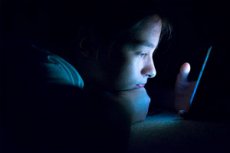
Due to the late onset of melatonin production and increased alertness in the evening, teens often find it difficult to fall asleep at a time that allows them to get the recommended eight to ten hours of sleep each night.
It is during adolescence that increasing school demands, activities, greater independence from parents and relationships with peers begin to compete with sleep. However, the role of social context is often overlooked when studying adolescent sleep. Now researchers from Sweden and Australia have examined how popularity among peers affects the sleep habits of teenagers aged 14 to 18.
The study was published in the journal Frontiers in Sleep.
"We showed that popular teenagers report shorter sleep duration. In particular, popular girls, but not boys, report more insomnia symptoms," said Dr Serena Badukko, a sleep researcher at Örebro University and first author of the paper.. "What's most interesting is that popularity seems to have a negative impact on sleep both before and after the advent of smartphones."
Popular and sleep-deprived In a sample of more than 1,300 Swedish teenagers, almost half of them girls, researchers examined whether popularity coincided with shorter sleep duration. They asked teens to name up to three friends, and those with the most nominations were determined to be more popular. These teens slept less than their peers, with the most popular teens sleeping up to 27 minutes less.
When the researchers looked at boys and girls separately, they also found a correlation between popularity and insomnia symptoms: More popular girls experienced more insomnia symptoms, such as difficulty falling or staying asleep, or waking up too early. Popular boys did not experience these symptoms to the same extent.
These gender differences are not yet fully understood, but the fact that boys and girls exhibit different friendship behaviors may provide an explanation. "Girls express more care and concern for their friends and are more helpful than boys. This may mean they carry these concerns with them when it's time to go to sleep," Baducco explained.
Phones may not explain the link between popularity and sleep "We also see that popularity was associated with worse sleep both before and after the development of handheld technology," Baducco said. This suggests it may not be smartphones causing popular teens to sleep less; other mechanisms may be at work instead.
Researchers suggest that more friends may mean more time devoted to them, which may lead to less time available for sleep. More emotional investment can also lead to difficulty sleeping. Both explanations apply both to the time before and after smartphones became widespread. However, this requires detailed study, the researchers say.
Accumulating Sleep Debt "Teens are perhaps the most sleep-deprived population throughout life," Baducco said. "Previous research suggests that 30 minutes of extra sleep can lead to improved mental health and better school performance."
With school starting early, many teenagers are trying to make up for lost sleep over the weekend - a strategy that can backfire on them. "Let's say a teenager sleeps in until 1 p.m. On Sunday. Getting to sleep that night to be ready for school the next day will be difficult because they won't feel tired," Baducco pointed out. “Delaying your wake-up time too much can perpetuate the problem of sleep debt accumulated during the week.”
Researchers believe that discussing social norms about sleep and peer expectations about bedtime is a missing component of existing interventions to improve sleep in adolescents. Additionally, further research is needed to examine the relationship between social connectedness and sleep and to clarify the observed gender differences.

